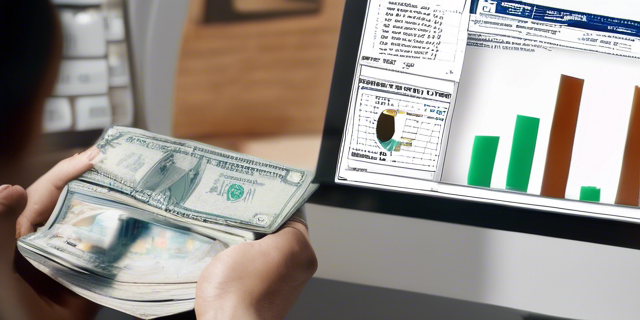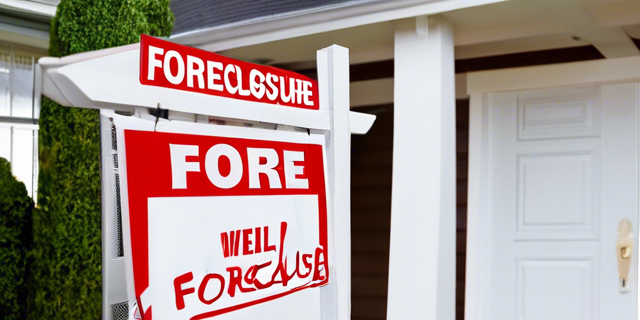Effective Ways to Debt Consolidation on Your Own 2024

Debt Consolidation
Feeling trapped by high interest credit card or personal loan debts that never seem to get smaller? Debt consolidation offers much-needed relief combining multiple balances under one lower fixed rate loan with a single payment vs juggling bills. Here’s your guide to DIY debt consolidation so you can take back control of runaway finances – without handing over exorbitant fees to agencies.
Consolidating works best for those committed to avoiding new debt and embracing frugal living to pay off balances rapidly. It provides structure ensuring extra payments attack principal not just interest. Let’s explore smart consolidation techniques providing affordable payments YOU customize.
Honestly Assess How Much You Owe
Consolidation shines brightest once you fully understand outstanding debts and collateral like vehicles securing loans. Pull official credit reports from AnnualCreditReport.com listing active accounts, balances owed, account status and payment histories.
Recording debts/payments in one place highlights opportunities for consolidation and helps construct a financial turnaround plan. Don’t forget student loans, medical bills and personal debts owed to family/friends.
Sort Debts into Categories
Group debts by type:
- Credit cards
- Auto loans
- Student loans
- Medical bills
- Personal loans
Listing fixed debts like car payments separately from unsecured credit card bills helps determine the best consolidation strategy per account type and terms. This also prevents missing or defaulting on secured auto/home loans while addressing credit card consolidation.
Get everything down on paper!
Cut Expenses to the Bone

Debt Consolidation
Lasting debt freedom requires sacrificing short term pleasures for long term gain. That means limiting expenditures substantially – yes, including dining out less! This frees up monthly cash flow for accelerated debt payments.
With full household participation, scrutinize the family budget for unnecessary spending here first:
- Entertainment/hobbies
- Cable TV/video streaming
- Excessive insurance coverage
- Gym memberships
- Expensive cell phone plans
Creatively trim budget items producing quick savings wins. Then divert this freed-up funding towards attacking debt principal.
Pay Down Balances Aggressively
Reducing interest charges lessens what you repay long term. The key? Pay MORE than minimums and send extra directly to balance principal.
Let’s assume you owe $10,000 on a credit card charging 19% APR. Only paying $200 monthly means taking 7+ years to eliminate the balance per this handy calculator!
But doubling payments to $400 monthly saves $2,500 in interest and finishes payoff in under 3 years. Now that’s real progress!
Invest Tax Refunds Wisely
Use tax refunds and bonuses to annihilate debt too! Adjust W-4 withholdings to limit refund size and send additional payroll income straight to high APR balances monthly instead of Uncle Sam over-collecting then returning a check the following April.
Outsmart debt using its least favorite weapon – cold hard cash attacking those principal balances!
Shop Balance Transfer Credit Card Offers
Another savvy consolidation move? Transferring high interest credit card balances to 0% balance transfer cards. Banks entice borrowers swiping debt their way using 0% introductory rate promotions on transferred balances for 12-18+ months.
These handy calculators illustrate potential interest savings:
Transferring $15,000 in credit card debt from a 19% APR card to one offering 0% APR for 15 months would save roughly $2,000 in interest not owed! Just be sure to READ THE FINE PRINT about transfer fees assessed upfront.
Don’t Get Overconfident!
The key caveat? 0% deals lure overspenders deeper into debt without changing free-spending ways. So consolidate judiciously by paying aggressively during teaser rates to avoid simply owing more later.
Live beneath your means and play balance transfer game correctly by becoming debt free before rates jump sky high again!
Research Debt Management Company Options

Debt Consolidation
Non-profit credit counseling firms also offer formal debt management plans (DMPs) combining unsecured debts under a fixed payment. Experienced counselors know “secret tips” assisting borrowers including:
- Securing lower credit card interest rates
- Waiving late/overlimit fees
- Halting lender collection efforts
Check the National Foundation for Credit Counseling to find reputable agencies with sound DMP performance records if considering paying for assistance. Just beware of scammers posing as helpers peddling risky debt relief schemes.
Can DMPs Hurt Credit Scores?
Yes, although indirectly. Having a DMP signals struggles managing financial matters. Creditors also frequently close enrolled accounts which lowers your total available credit.
But addressing debts responsibly outweighs score impacts short term. Just focus on completing counseling programs to rebuild scores long term through careful spending.
The bottom line? Consolidating debt yourself works wonders without relying on middlemen charging expensive account fees.
Leverage Home Equity to Eliminate Debt
Tapping growing home equity via cash-out mortgage refinancing or home equity loans/lines converts real estate wealth into attractive fixed rate vehicles for addressing lingering high interest rate debt once and for all.
Know Your Mortgage Loan Options
With home values rising, homeowners gain equity unlocking borrowing power. Determining the best “cash-out” product to consolidate debt rests on factors like:
- Equity stake
- Credit scores
- Income verification
- Loan terms/rates
Researching lender offerings helps identify optimal mortgages or home equity installment loans/lines of credit for absorbing credit card, medical or education debts.
Run the Numbers
Crunching figures illuminates the best approach for your situation. Assume you snag a $50,000 fixed rate home equity loan at 7% interest to eliminate $45,000 in credit card debt charging 19% APR.
- Old APR Costs = $45,000 balance x 19% interest = $8,550 yearly
- New APR Costs = $50,000 loan x 7% Interest = $3,500 yearly
That’s $5,050 in interest savings annually you gain from consolidating into a lower rate real estate secured installment loan!
Tap home equity to squash nagging credit card or tuition bills AND deduct interest from taxes. Now that’s leveraging your assets wisely!
Explore 401(k) and IRA Loans
If you have retirement accounts with vested balances, borrowing from 401(k) plans or tapping IRA early distributions allow accessing funds paying off consumer debt rapidly.
While adding risk, the math can work favorably long term at lower loan interest rates. Just crunch numbers wisely leveraging qualified money temporarily to fix debt dilemmas.
Know Retirement Account Loan Rules
Review 401(k) and IRA guidelines to understand borrowing and withdrawal penalties ensuring you qualify for programs. See IRS site info here.
Key factors when leveraging retirement funds for debt consolidation include:
- Loan eligibility and amounts
- Interest charged on loan
- Loan repayment terms
- Early withdrawal penalties
Consult a financial advisor to see if tapping retirement funds makes fiscal sense for addressing unsecured debts based on your unique situation.
Run Retirement Account Loan Calculations
Crunch the math comparing potential finance charges on a 401(k) loan vs paying ongoing high credit card interest rates.
- 401(k) Loan = $10,000 borrowed x 4% APR = $400 annual interest
- Credit Card Debt = $10,000 balance x 19% APR = $1,900 annual interest
That’s $1,500 in less interest per year which helps pay down principal faster!
If facing high unsecured debt interest, leverage company plan loans or IRA withdrawals temporarily (paying taxes/penalties) in order to fix finances for good.
When Bankruptcy Becomes the Only Option
Exhausting all financial options without success leaves filers facing difficult choices – including bankruptcy. This legal process eliminates or restructures debts under court supervision providing relief for those qualifying.
Know the Differences in Filing Options
- Chapter 7 bankruptcy erases eligible debt completely. Assets like houses or cars may be sold to repay creditors to a degree.
- Chapter 13 reorganizations establish 3-5 year court managed repayment plans through wage garnishments until amounts owed are addressed.
While damaging credit scores short term, those unable to find fiscal relief elsewhere gain a fresh start shedding oppressive debts weighing them down.
Don’t File Bankruptcy Casually!
Bankruptcy leaves long term financial scars and should only be pursued once ALL self-directed debt repayment options fail. Completing approved credit counseling first also provides financial education protecting against repeating past money mistakes.
Let bankruptcy fall as a very LAST resort if unable to realistically consolidation debts independently any other way.
Enjoy a Brighter Financial Future
Committing to some type of debt consolidation plan equates to grabbing lifelines pulling yourself from the frigid waters of financial distress back into lifeboats towards warmer shores of stability.
Implementing consolidation techniques properly while embracing thriftiness lifts soul-crushing burdens so you breath freely again. Then channel energies improving income capabilities and saving for the future so past money mistakes become faded nightmares.
You absolutely can right the ship fiscally using consolidation vehicles wisely to lift anchoring debt off shoulders for good. Just stay disciplined adopting smarter long term spending behaviors so problems never resurface.
The journey facing fears conquering debts holds immense rewards awaiting your arrival! Onward to financial freedom!
Conclusion
Review the wide variety of consumer debt consolidation techniques covered today – from simple balance transfers to leveraging equity lending. Look objectively at your full debt picture then commit following logical consolidation repayment plans.
The path to freedom from oppressive debts cannot be navigated successfully without a solid fiscal roadmap plus determined daily execution. So after identifying optimal consolidation routes, steel your resolve adhering to revised budgets and aggressive new payment schedules.
Debt balances won’t just disappear on their own. But taking assertive actions drafting workable self-guided consolidation blueprints puts you back in the driver’s seat. Soon you will be motoring steadily towards becoming debt free faster than imagined!
FAQs
Should I take money from my 401(k) to pay off debt?
Generally no – retirement accounts come with taxes/penalties for early withdrawals. Only use this route if facing ultra high interest debt and a low rate 401(k) loan costing less long term. This risky move requires calculations confirming favorability.
What happens to my credit score if I consolidate debt?
Direct effects are usually minimal. Indirect impacts vary depending on actions taken – like closing accounts affecting your length & diversity of credit history metrics. Avoid new financing when consolidating and monitor reports.
Where can I get help with debt consolidation?
Non-profit credit counseling agencies provide professional support creating structured Debt Management Plans consolidating repayments. Banks also assist qualifying borrowers consolidate balances under home equity loans/lines of credit or cash-out mortgage refinancing.
Should I consolidate federal student loans?
Consolidating federal education loans can simplify payments under one servicer and provide access to income-driven plans. But doing so restarts the clock on loan forgiveness programs requiring another 10-20 years of payments first. Run numbers to see if consolidating federal loans makes sense based on your goals.
What happens if I default on consolidated debt payments?
Defaulting on debt consolidation loans secured by collateral like homes or autos risks surrendering of that property to satisfy defaults. Unsecured consolidated debts revert back to original creditor terms allowing collection efforts and impacts to credit. Avoid missed payments!








